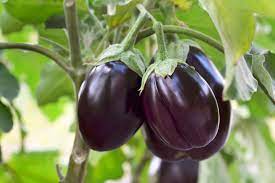LIFE SCIENCES P2 2023 May/June SectionA Question1.4.1-1.6.3
Activity Summary
0 of 17 Questions completed
Questions:
Information
You have already completed the activity before. Hence you can not start it again.
Activity is loading…
You must sign in or sign up to start the activity.
You must first complete the following:
Results
Results
0 of 17 Questions answered correctly
Your time:
Time has elapsed
You have reached 0 of 0 point(s), (0)
Earned Point(s): 0 of 0, (0)
0 Essay(s) Pending (Possible Point(s): 0)
Categories
- Life Sciences Grade 12 0%
-
Repeat this activity as many time as you can, wath the video leasons, and join the dicussion forum. Good luck with your exams. This might be your toughest exam ever.
- 1
- 2
- 3
- 4
- 5
- 6
- 7
- 8
- 9
- 10
- 11
- 12
- 13
- 14
- 15
- 16
- 17
- Current
- Review / Skip
- Answered
- Correct
- Incorrect
-
Question 1 of 17
1. Question
1.4 The diagram below represents a cell in an early stage of meiosis.

1.4.1 Give the:
(a) Phase of meiosis representedCorrectIncorrect -
-
Question 2 of 17
2. Question
1.4 The diagram below represents a cell in an early stage of meiosis.

1.4.1 Give the:
(b) Number of chromatids shownCorrectIncorrect -
-
Question 3 of 17
3. Question
1.4 The diagram below represents a cell in an early stage of meiosis.

1.4.1 Give the:
(c) Number of homologous chromosome pairsCorrectIncorrect -
-
Question 4 of 17
4. Question
1.4 The diagram below represents a cell in an early stage of meiosis.

1.4.2 Identify structure:
(a) RCorrectIncorrect -
-
Question 5 of 17
5. Question
1.4 The diagram below represents a cell in an early stage of meiosis.

1.4.2 Identify structure:
(b) SCorrectIncorrectHint
separates and protects the interior of a cell from the outside environment.
-
-
Question 6 of 17
6. Question
1.4 The diagram below represents a cell in an early stage of meiosis.

1.4.2 Identify structure:
(c) TCorrectIncorrectHint
is the type of protoplasm that makes up the cell nucleus, the most prominent organelle of the eukaryotic cell. It is enclosed by the nuclear envelope,
-
-
Question 7 of 17
7. Question
1.4.3 (a) Name an organ in Male animals where meiosis occurs.
CorrectIncorrect -
-
Question 8 of 17
8. Question
1.4.3 (b) Name an organ in female animals where meiosis occurs.
CorrectIncorrect -
-
Question 9 of 17
9. Question
1.5 The brinjal plant carries edible fruit. Scientists have been studying the
inheritance of two genes, one for stem texture and the other for fruit shape.
The stems can be smooth (N) or prickly (n), while the fruit shape can be
round (R) or elongated (r).


1.5.1 Name the type of cross that studies two characteristics.
CorrectIncorrect -
-
Question 10 of 17
10. Question
1.5.2 State the:
(a) Dominant characteristic for stem textureCorrectIncorrect -
-
Question 11 of 17
11. Question
1.5.2 State the:
(b) Recessive characteristic for fruit shapeCorrectIncorrect -
-
Question 12 of 17
12. Question
1.5.3 Give the:
(a) Genotype of a plant with a prickly stem and elongated fruitCorrectIncorrect -
-
Question 13 of 17
13. Question
1.5.3 Give the:
(b) Phenotype of a plant with the genotype NnRRCorrectIncorrect -
-
Question 14 of 17
14. Question
1.6 The table below shows information on selected hominid fossils.

1.6.1 Name fossil P.
CorrectIncorrectHint
is an Australopithecus sediba, an entirely new hominid. It was discovered by Berger’s nine-year-old son, Matthew, at the Malapa site in the Cradle of Humankind in 2008. It is believed to be the remains of a boy aged between eight and 13 years old.
-
-
Question 15 of 17
15. Question
1.6 The table below shows information on selected hominid fossils.

1.6.2 Identify the species at R.
CorrectIncorrectHint
an extinct species of australopithecine which lived between about 3.3 and 2.1 million years ago in the Late Pliocene to Early Pleistocene of South Africa.
-
-
Question 16 of 17
16. Question
1.6 The table below shows information on selected hominid fossils.

1.6.3 Give the name of the scientist at:
(a) QCorrectIncorrectHint
an American-born South African paleoanthropologist and National Geographic Explorer-in-Residence
-
-
Question 17 of 17
17. Question
1.6 The table below shows information on selected hominid fossils.

1.6.3 Give the name of the scientist at:
(b) SCorrectIncorrectHint
best known for his involvement in the 1924 discovery of the first fossil found of Australopithecus africanus
-

